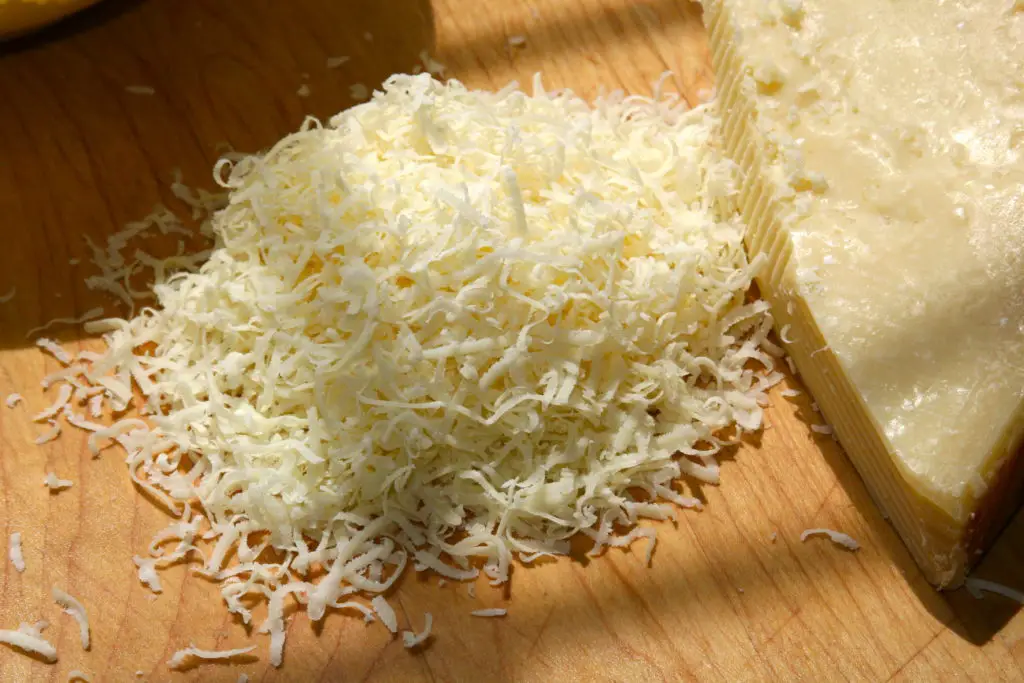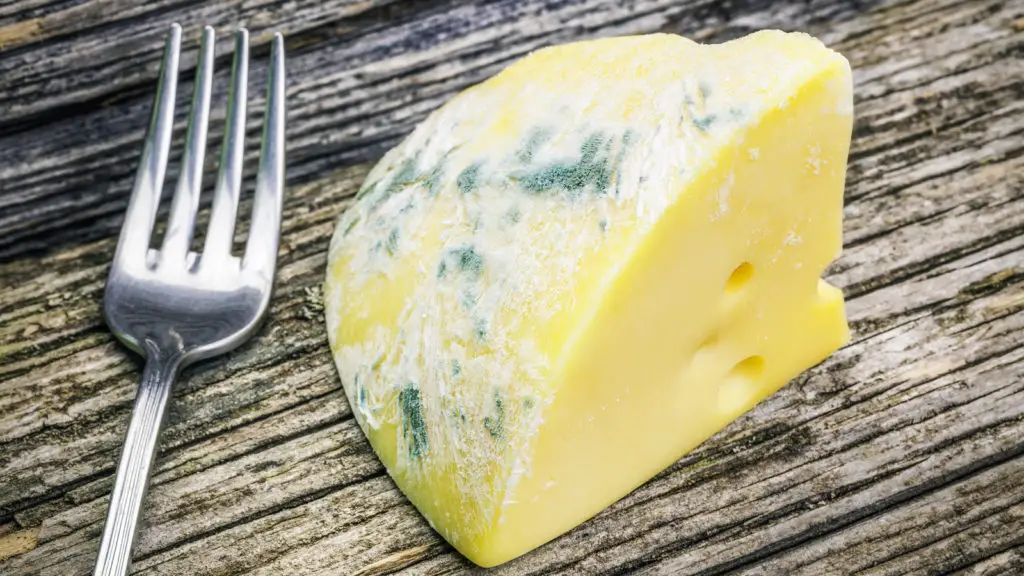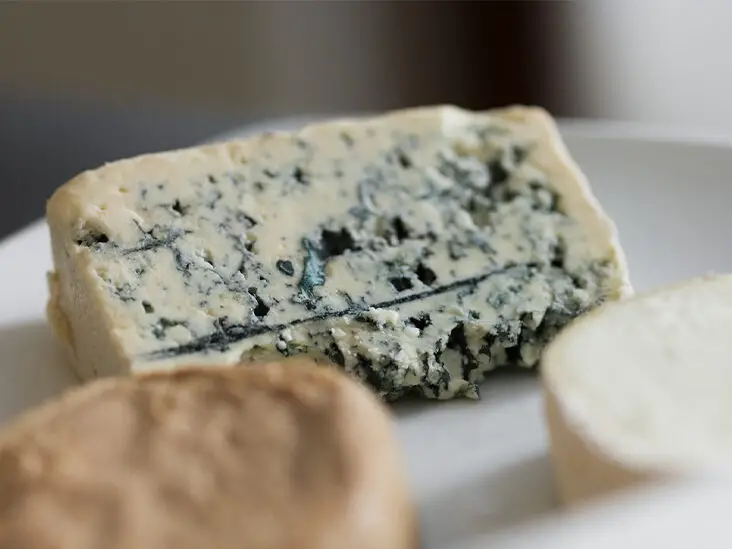What Can Happen if You Eat Moldy Cheese
Jump To:
Cheese is a popular dairy product. If you have ever noticed small, fuzzy areas on cheese, it may be unsafe to eat. All foods can be affected by mold, including cheese. Mold on food is usually a sign that it’s time to throw it away. But, this may not always apply to cheese. Hence this article, whether or not moldy cheese can be eaten safely and how to tell the difference between the good and the bad.

If you ask Can moldy grated Parmesan make you sick? Yes, moldy parmesan cheese can make you sick. You can save hard cheeses such as Swiss, Parmesan, and Cheddar by removing the mold. But you should throw grated parmesan cheese with mold as there’s no way to cut away the mold.
What’s mold?

Molds are a type of fungus that can produce spores. They can travel through insects and air, as well as water. Although they thrive in moist, warm environments, molds are best.
Mold can indicate spoilage of most foods. It can be white, grey, gray, black, or fuzzy.
It is usually visible on the food’s surface when it begins growing. However, its roots can penetrate deep into the food. It can cause a change in the appearance and smell of food, causing an “off” or sour taste.
While molds can be dangerous to eat, some molds are used in cheesemaking for flavor and texture. These types are safe to eat.
What cheeses are made from mold?
The process of making cheese is to curdle milk using an enzyme called rennet and then drain the liquid. The curds left behind are then salted and aged.
Cheeses can have different tastes, textures, and appearances depending on what type of milk they are made from, the bacteria present, how long they were aged, and what processing methods were used. Certain types of cheese may require the mold to be made.
Mold is responsible for the distinctive bluish veins found in blue cheese. It is also responsible for Brie’s thick outer rind, and soft, creamy inside.

These cheeses are mold-grown
- Blue cheeses – Roquefort and Gorgonzola, Stilton, and other blue varieties
- Soft-ripened Cheeses: Brie and Camembert, Humboldt Fog and St. Andre
Soft-ripened cheeses can be made by adding mold to the milk during processing. However, blue cheeses usually have spores injected directly into the curds.
Can you eat moldy cheese?
Mold on cheese doesn’t always indicate spoilage. Different molds are used to make certain varieties of cheese than those that grow on old bread.
There are many possible outcomes when you eat moldy cheese. It all depends on what type of mold it is and whether it harbors bacteria. You can’t tell by simply looking at it. These are some possible outcomes.
- Nothing. It might taste bitter or cause an upset stomach.
- It is possible to have an allergic reaction or foodborne illness.
- You may be admitted to the hospital, placed on dialysis, or even killed. Detwiler states that this is more common in immunocompromised people.
It is safer to throw away the cheese, especially if there are high-risk individuals or children in the home.
This is especially true if you are dealing with soft cheeses, shredded cheeses, or sliced cheeses. Soft cheeses can become moldy because of their high moisture content.
You might be able to cut the moldy parts off of hard cheeses like Swiss, Parmesan, or Swiss. You should cut off at least 1 inch from the moldy area. Keep the knife away from the mold to prevent it from contaminating other parts of your cheese.
Mold can be detected by odor, which is more than just appearance. To establish a baseline, you should smell the cheese after purchase, as some cheeses are naturally stinky. You can then evaluate the freshness of the cheese as you go.
Mold-grown cheeses may also be susceptible to dangerous spores. They look similar to other food spores.
When to throw out moldy cheese?
You don’t have to throw out the cheese if you find mold.
It is rare for spores not to reach the top of hard cheeses like Swiss, Colby, Swiss, and Parmesan. The rest of the product should be safe to eat. You can save it by trimming at least 1 inch (22.5 cm) from the mold.
This technique does not apply to soft cheeses, shredded, crumbled, or sliced varieties.
These types of mold, including cream cheese, cottage cheese, and ricotta should be thrown away immediately as the spores could easily infect the entire product.
The dangers of eating moldy milk
Molds can contain harmful bacteria such as E. E. coli, Listeria and Salmonella are all possible causes of food poisoning. It can even cause death in severe cases. Particularly, liver cancer risk is increased by aflatoxin, a carcinogen.
Avoiding moldy foods and safe food storage are the best ways to reduce your exposure to the mycotoxin.
How to store cheese properly?
Proper storage techniques can prevent cheese from spoiling.
Regular cheese should not have cracks or mold growth. Smooth texture.
Look out for fuzzy or off-color spots when purchasing mold-grown cheeses. Use the blue-veined areas to determine if any unusual textures or colors appear.
Your cheese should be refrigerated at 34-38degF. You can protect your cheese by wrapping it tightly in plastic wrap.
Conclusion
Cheese is a special food as some types are made from safe-to-eat molds and other fungi that are best to avoid. Be aware of the differences between types of cheese, because moldy cheese can still pose a danger.
Blue and soft-ripened cheeses can be eaten safely because they are made with certain molds. If mold develops on soft, shredded, or sliced varieties, it is best to throw them out immediately.
You can save hard cheeses such as Swiss, Parmesan, and Cheddar by removing the mold.
Mold can lead to food poisoning and other health problems. You should inspect your cheese carefully before you eat it.
